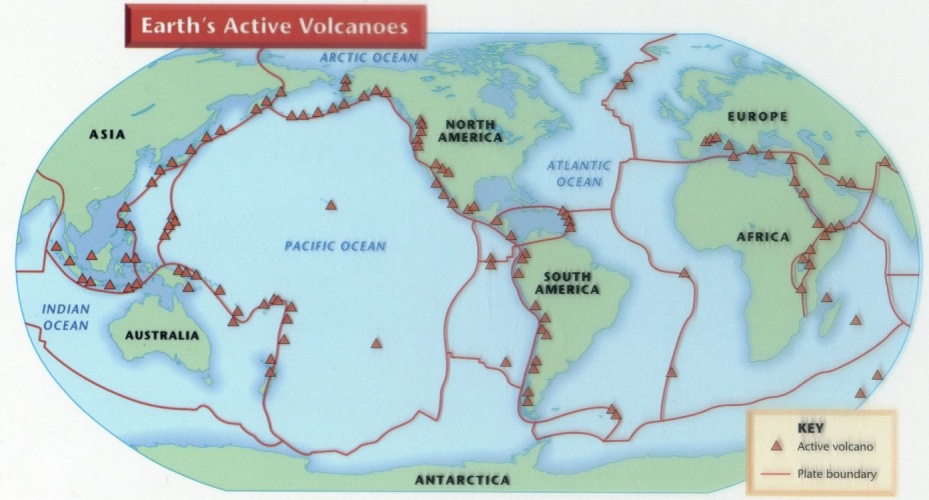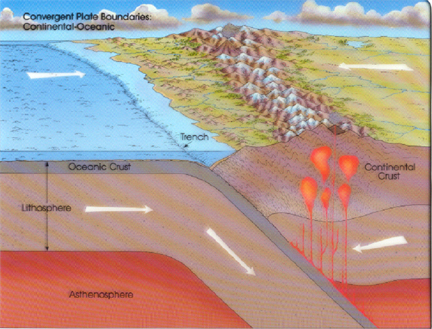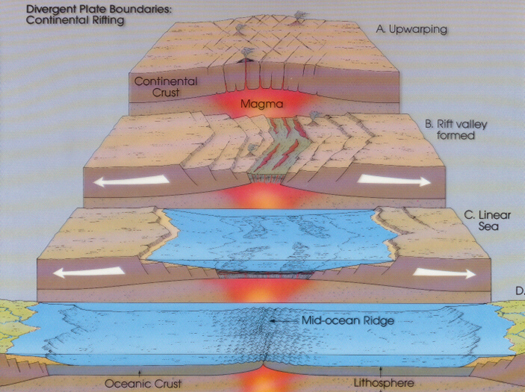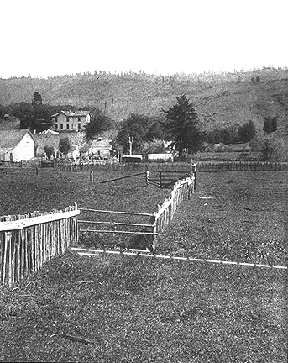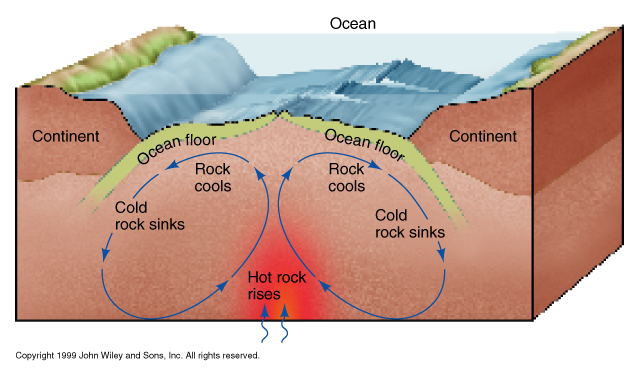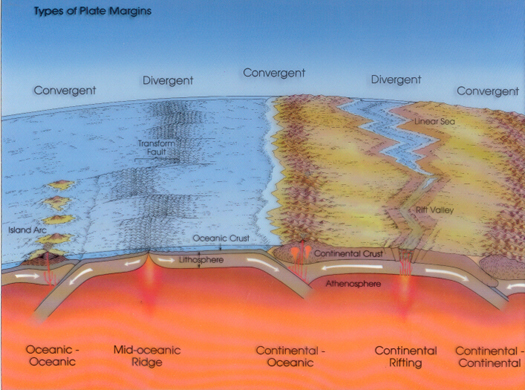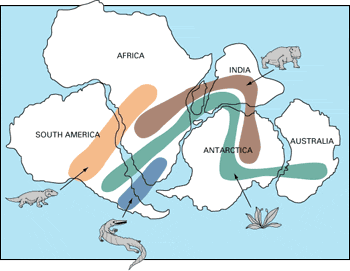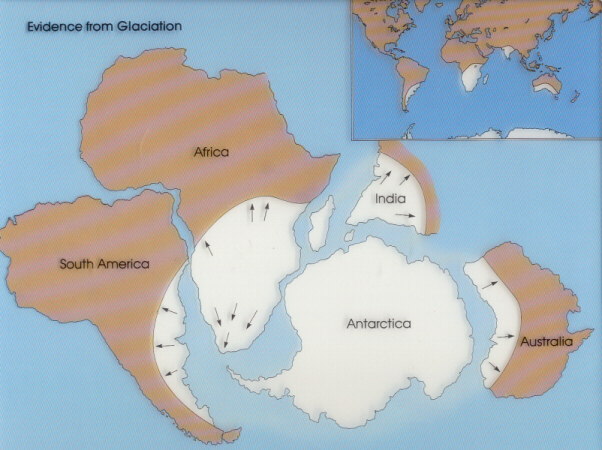Earthquakes & Volcanoes
Earthquakes, volcanoes and mountain ranges tend to happen in similar areas.
Types of Plate Boundaries Convergent- plates collide into each other.
Where an oceanic and a continental plate collide, the denser oceanic plate will be forced under (subduction) the other. Divergent
|
Speed Links
|
||
Transform- two plates slide past each other.
The exception to this arrangement are "Hot Spots" which are plumes of hot material (rather than belts) in the middle of plates. These spots stay stationary while the plate moves above it. The spot melts through the plate like a blow torch and produces a volcano above it. As the plate moves, the spot melts through another spot producing a chain of volcanic islands. Hawaii is an example of a hot spot island chain.
The movement of the plates is caused by convection currents deep within the Earth. The force that moves the plates around the earth are convection currents inside the mantle.
The different types of plate boundaries are caused by a combination of the direction of convection as well as they type of crust: continental or oceanic.
Puzzle Fit- if the continents were cut out of a map, most of the landmasses will fit together to form a larger supercontinent, which is called Pangaea.
Fossil Evidence- in the picture above, fossils of many land-living have been found on opposite shores. When Pangaea is re-assembled, the fossils match up. Glacial Evidence- when Pangaea is re-assembled, there is evidence of a single ice sheet (at least for this episode) affecting many of the southern continents. When viewed this way, this sheet leaves consistent evidence of a single glacier. When viewed on the current continents, it is inconsistent and even highly improbable. For example, India, which is north or the Equator, has glacial evidence coming from the south!
EarthquakesAn earthquake is an event where two pieces of crust shift against each other. The rumbling felt is from the rocks slipping, sticking and breaking. The vibrations are called seismic waves. There are different types of seismic waves that vibrate in different ways. The focus is the spot within the earth where the earthquake began. The epicenter is the spot on Earth's surface closest to the focus. A fault is a crack along which the rocks slide. Seismic Waves- during an earthquake, several types of waves are generated. The vibrations felt are actually called seismic waves that are traveling through the Earth. P-Waves
S-Waves
Youtube Video demonstrating P-Waves and S-Waves.
How to Use the P-Wave and S-Wave Travel Time ChartP-Wave & S-Wave Chart (opens a new window so your pop-up blocker may stop it) The P-line shows how much time it take a P-wave to travel a certain distance. So if you need to know how much time it takes the p-wave to travel 2,000km, it is just over 4 minutes (about 4:05 ). The S-wave works the same way: for 2,000km it takes 7:20 . To find the distance to epicenter: You are in charge of watching the seismic station tonight when the seismograph detects an earthquake. The earthquake didn’t happen where you are- you can’t even feel it. As a result, you don’t know what distance or direction the earthquake happened. The P-wave and S-wave are separated by 4:05 (4 minutes, 5 seconds). You need to find a spot on the graph where the P-line and the S-line are separated by 4:05 .
To Find The Time That The Earthquake Occurred When a seismograph detects an earthquake that happened at some distance, (2,600km for example) you know that the earthquake happened some time in the past and it took time for the waves to reach your station. But how long ago? All you need to do is answer the question “how long does it take a P-wave to travel 2,600km?
Earthquake StrengthThe intensity or strength of an earthquake is measured in two main ways:
Seismic waves as “x-rays”
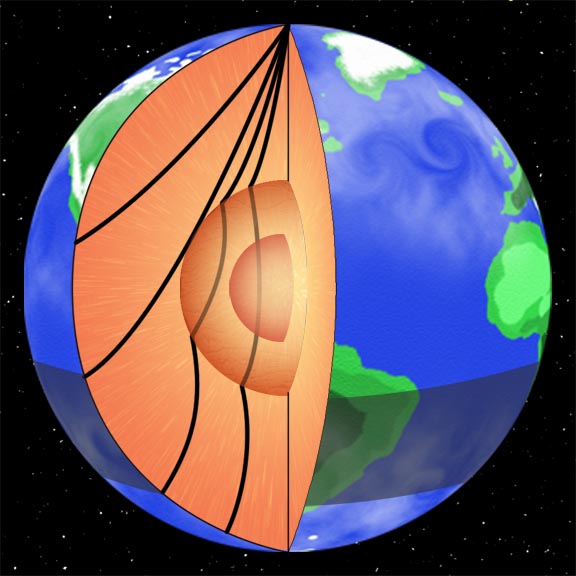 Shadow Zone diagram photoshop drawing by Phil Medina Properties of the material (such as density and pressure) that the waves pass through can be inferred by the speed and angle that the waves travel. The MOHO is a boundary between the crust and the upper mantle where the velocity of waves jumps up sharply. This sharp increase in velocity is called a discontinuity.
Lab research and studies of meteorites suggest that the core is made of Iron and Nickel (FeNi). |
|||
 Over 15 years of Medina On-Line 1994-2011 |
|||

